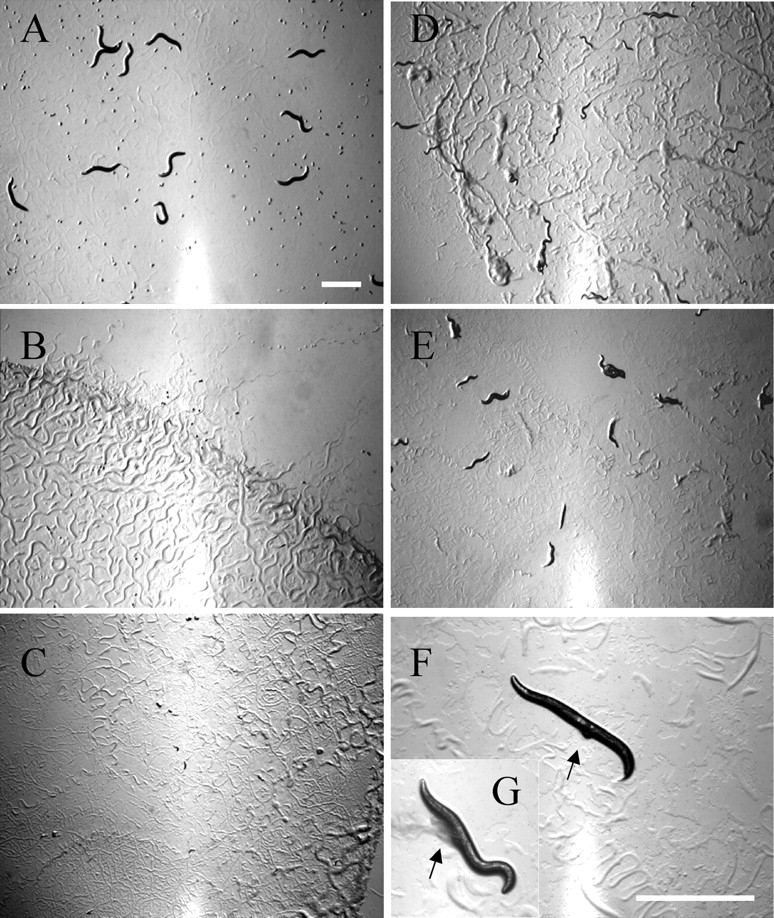Figure 1.

Typical phenotypes of F1 progeny from nematodes RNAi-treated for helicase-like genes. Typical images of the F1 progeny from eggs laid by RNAi-treated P0 animals on RNAi plates for control [vector alone (A)], mcm-6(ZK632.1) RNAi (B), W08D2.7 RNAi (C), ZK686.2 RNAi (D), Y50D7A.11 RNAi (E), and cgh-1 (C07H6.5) RNAi [(F) and (G) in a threefold enlarged image] are shown. The progeny were cultured on RNAi plates supplemented with dsRNA-expressing bacteria for 3 days after laying, and images were then captured. The RNAi phenotypes shown are embryonic lethal (Emb in Table 1) (B), larval arrest (Lva) (C), slow growth (Gro) (D), slow growth and sterile progeny (Gro Stp) (E), and protruding vulva (Pvl) (F and G). Arrows indicate protruded vulva (F) and resultant abdominal burst (G). Bar: 1 mm.
